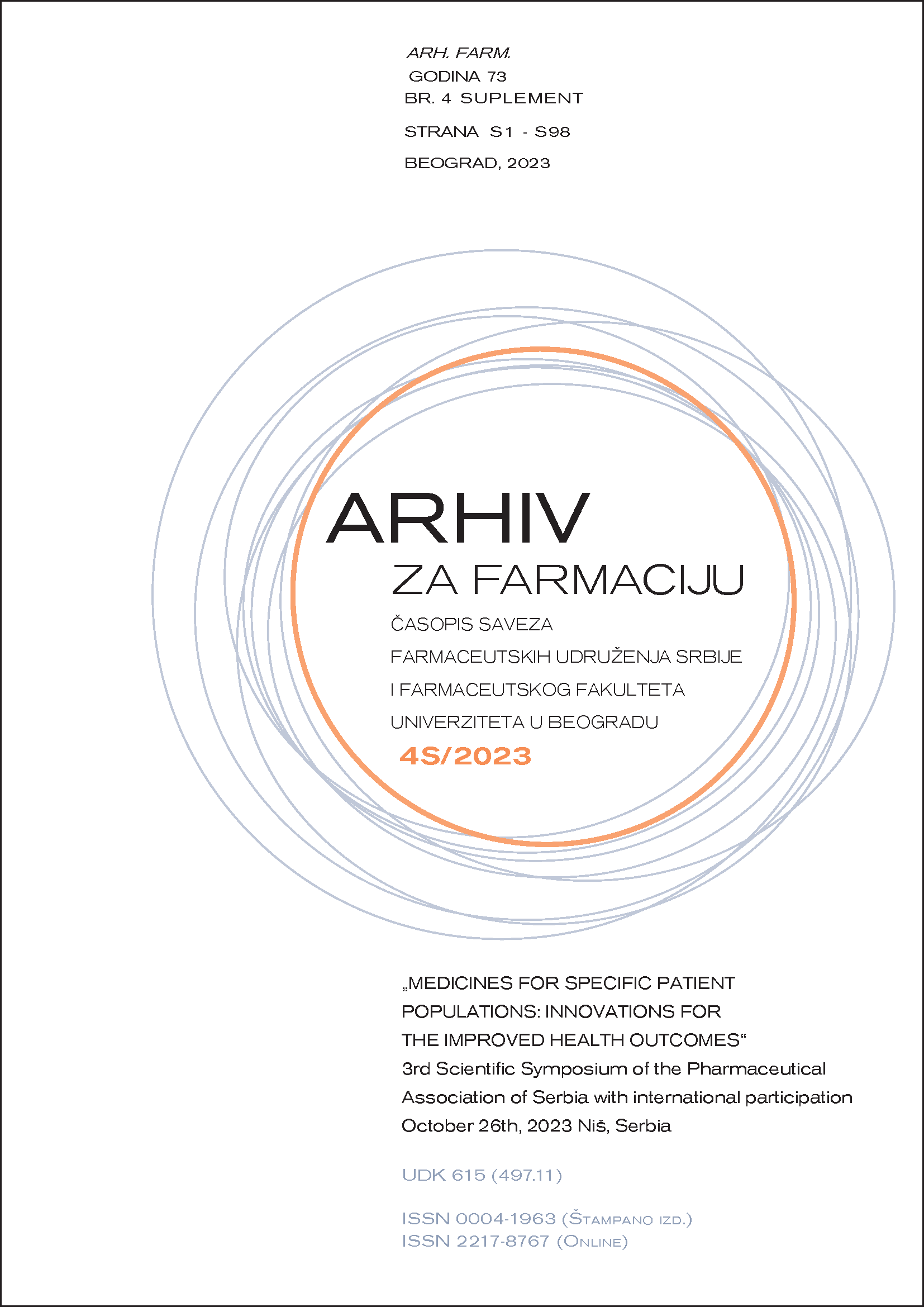INVESTIGATION OF p-SCN-Bn-DOTA-TRASTUZUMAB LABELED WITH RADIOACTIVE AND NON-RADIOACTIVE LUTETIUM AND YTTRIUM: A CRUCIAL STEP FOR FUTURE APPLICATIONS
Abstract
The significance lies in preparing stable, trastuzumab-immunoconjugate through the utilization of non-radioactive LuCl3 and YCl3, via p-SCN-Bn-DOTA. This approach is crucial to determine potential physicochemical alterations in immunoconjugate structure following metal binding. Post-conjugation, employing a 1:20 molar ratio, freeze-drying was performed to obtain stable immunoconjugates for subsequent analysis. Several chemical methods were employed to characterize antibody stability and retained immunoreactivity within the formulated immunoconjugates. Proof of protein integrity came from SDS-PAGE electrophoresis, with uniform fragment intensities (25 kDa for light chain, 50 kDa for heavy chain) indicating antibody non-degradation (1). IR and Raman spectroscopy verified secondary structural changes, with the presence of characteristic amide bands in both spectra indicating the retention of native secondary structure (2). Employing MALDI-TOF-MS, 4.9 p-SCN-Bn-DOTA molecules were determined per antibody molecule. The promising outcomes from non-radioactive labeling provide an opportunity for potential labeling with radioactive lutetium-177 and yttrium-90, each with a specific activity of 200 µCi/mL. Radioisotopes were incubated with p-SCN-Bn-DOTA-trastuzumab for an hour at 40 ºC. Evaluation of radiochemical purity and stability was conducted using the ITLC-SG system. Optimal mobile phases, specifically 0.4 M methanol:sodium acetate (1:1) for yttrium-90 and 0.9% NaCl for lutetium-177, facilitated thorough examination. Remarkable radiolabeling efficiency was achieved, >96% for yttrium-90 and >99% for lutetium-177. Stability assessments after 72 hours demonstrated greater stability in 177Lu-p-SCN-Bn-DOTA-trastuzumab (<1.5% lutetium-177 release) compared to the 90Y-labeled counterpart (<17% yttrium-90 release). This study demonstrates the successful development of radioimmunoconjugates, positioning this agent for potential application in vivo investigations.
References
1. Sterjova M, Džodić P, Ruskovska T, Apostolova P, Risteski M, Janevik-Ivanovska E. Preparation and integrity examination of freeze dried kit of trastuzumab-immunoconjugates and cold labeled immunoconjugtes by applying SDS-PAGE electrophoresis. Acta med. Median. 2019; 58(3): 15-23.
2. Sterjova M, Džodić P, Makreski P, Duatti A, Risteski M, Janevik-Ivanovska E. Vibrational spectroscopy as a tool for examination to the secondary structure of metal-labeled trastuzumab immunoconjugates. J. Radioanal. Nucl. Chem. 2019; 320(1): 209-218.

